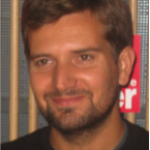Link to Pubmed [PMID] – 20657642
PLoS ONE 2010;5(7):e11495
Melatonin is a powerful antioxidant and a synchronizer of many physiological processes. Alteration of the melatonin pathway has been reported in circadian disorders, diabetes and autism spectrum disorders (ASD). However, very little is known about the genetic variability of melatonin receptors in humans. Here, we sequenced the melatonin receptor MTNR1A and MTNR1B, genes coding for MT1 and MT2 receptors, respectively, in a large panel of 941 individuals including 295 patients with ASD, 362 controls and 284 individuals from different ethnic backgrounds. We also sequenced GPR50, coding for the orphan melatonin-related receptor GPR50 in patients and controls. We identified six non-synonymous mutations for MTNR1A and ten for MTNR1B. The majority of these variations altered receptor function. Particularly interesting mutants are MT1-I49N, which is devoid of any melatonin binding and cell surface expression, and MT1-G166E and MT1-I212T, which showed severely impaired cell surface expression. Of note, several mutants possessed pathway-selective signaling properties, some preferentially inhibiting the adenylyl cyclase pathway, others preferentially activating the MAPK pathway. The prevalence of these deleterious mutations in cases and controls indicates that they do not represent major risk factor for ASD (MTNR1A case 3.6% vs controls 4.4%; MTNR1B case 4.7% vs 3% controls). Concerning GPR50, we detected a significant association between ASD and two variations, Delta502-505 and T532A, in affected males, but it did not hold up after Bonferonni correction for multiple testing. Our results represent the first functional ascertainment of melatonin receptors in humans and constitute a basis for future structure-function studies and for interpreting genetic data on the melatonin pathway in patients.




